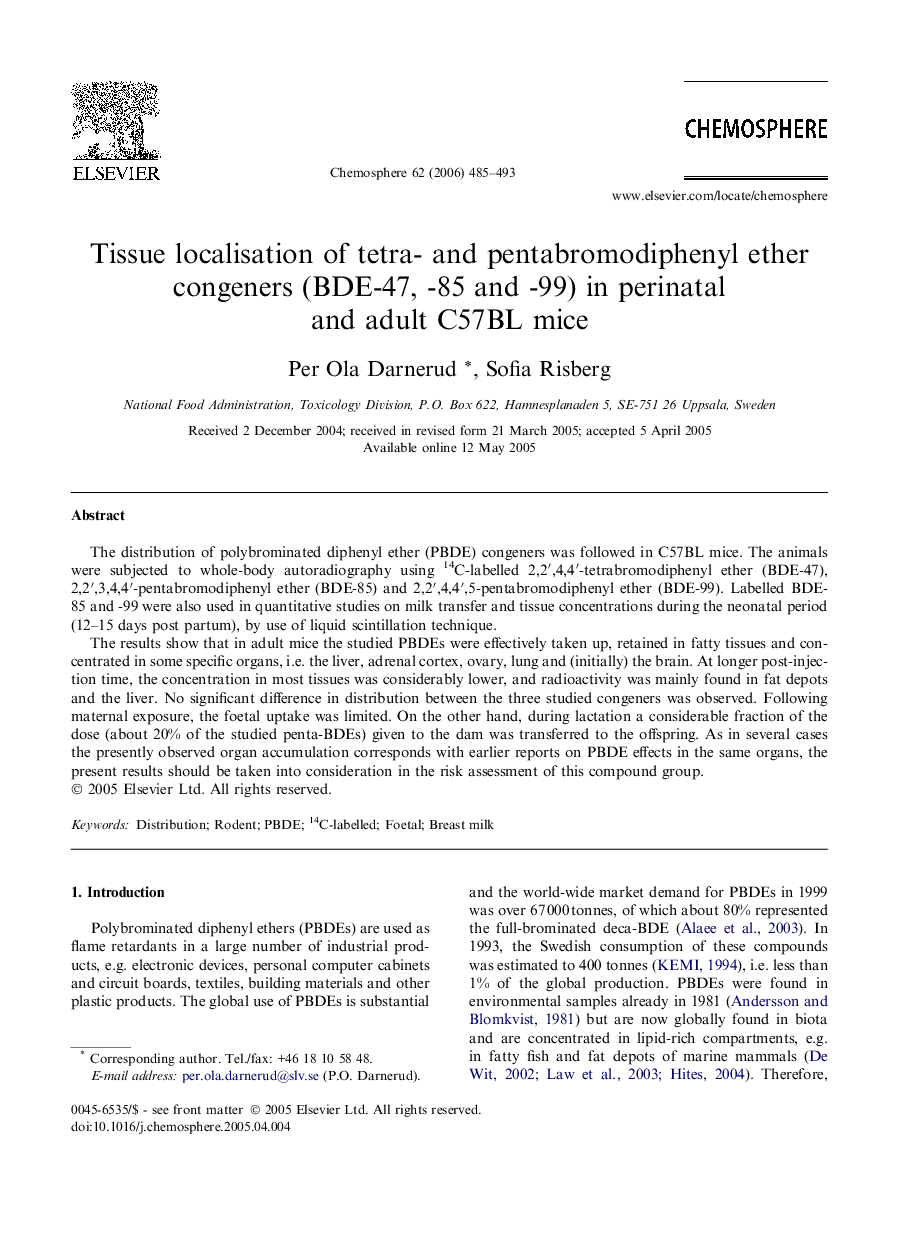| Article ID | Journal | Published Year | Pages | File Type |
|---|---|---|---|---|
| 4416260 | Chemosphere | 2006 | 9 Pages |
The distribution of polybrominated diphenyl ether (PBDE) congeners was followed in C57BL mice. The animals were subjected to whole-body autoradiography using 14C-labelled 2,2′,4,4′-tetrabromodiphenyl ether (BDE-47), 2,2′,3,4,4′-pentabromodiphenyl ether (BDE-85) and 2,2′,4,4′,5-pentabromodiphenyl ether (BDE-99). Labelled BDE-85 and -99 were also used in quantitative studies on milk transfer and tissue concentrations during the neonatal period (12–15 days post partum), by use of liquid scintillation technique.The results show that in adult mice the studied PBDEs were effectively taken up, retained in fatty tissues and concentrated in some specific organs, i.e. the liver, adrenal cortex, ovary, lung and (initially) the brain. At longer post-injection time, the concentration in most tissues was considerably lower, and radioactivity was mainly found in fat depots and the liver. No significant difference in distribution between the three studied congeners was observed. Following maternal exposure, the foetal uptake was limited. On the other hand, during lactation a considerable fraction of the dose (about 20% of the studied penta-BDEs) given to the dam was transferred to the offspring. As in several cases the presently observed organ accumulation corresponds with earlier reports on PBDE effects in the same organs, the present results should be taken into consideration in the risk assessment of this compound group.
